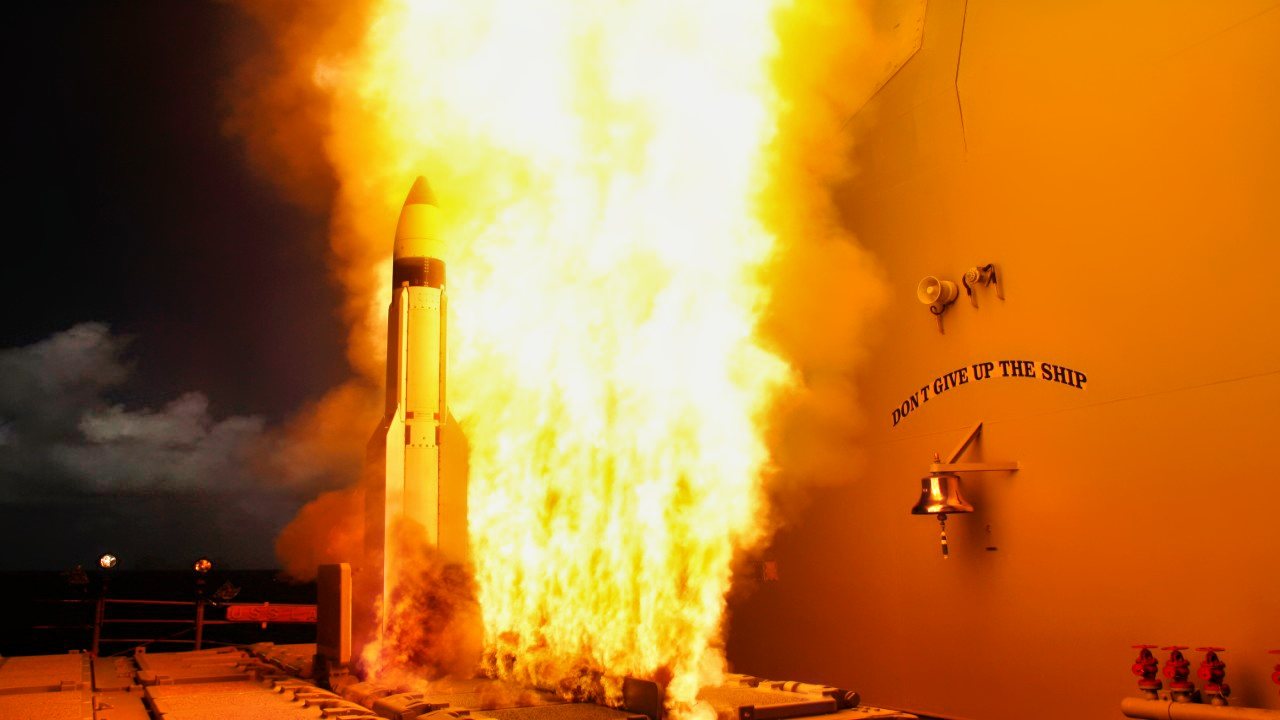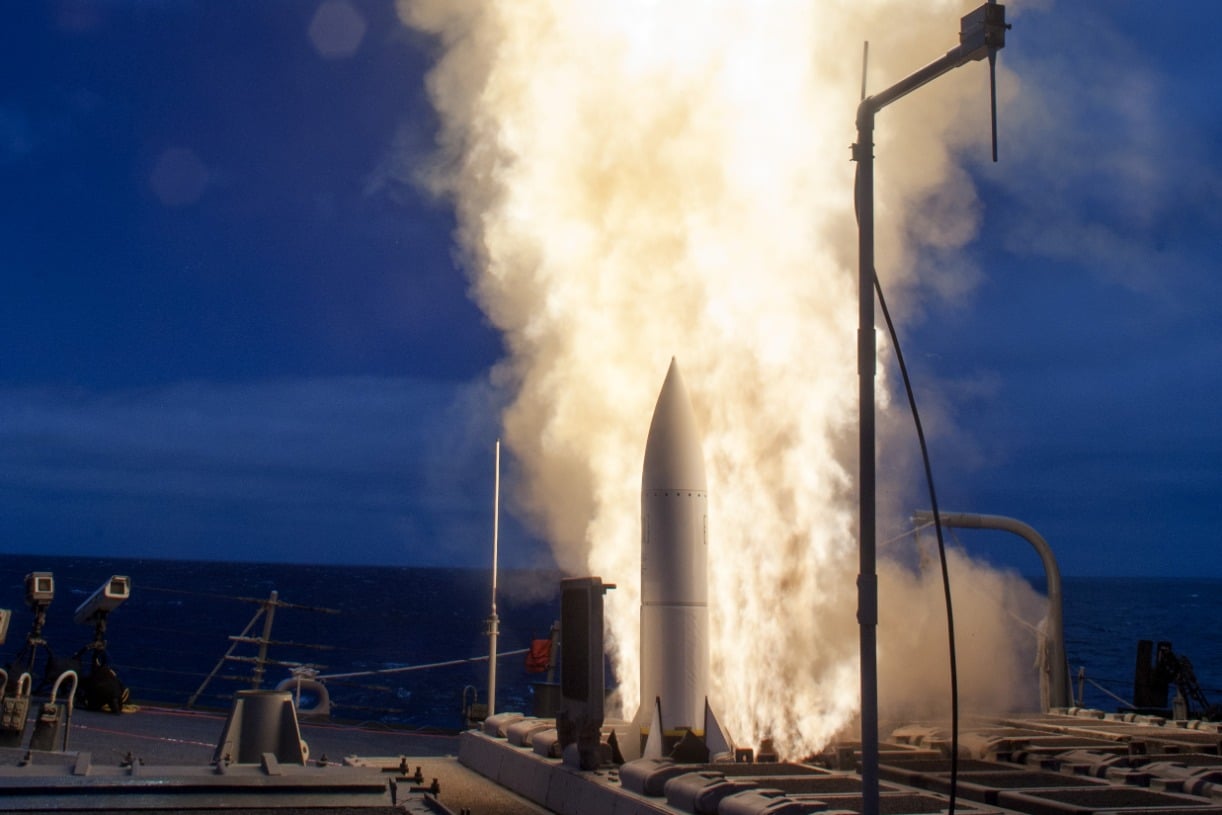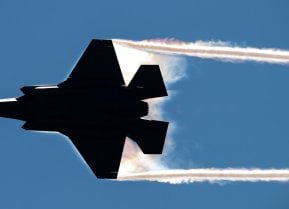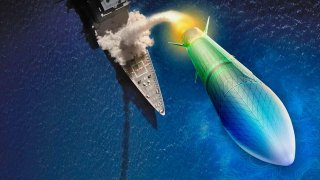China Will Freak: The Navy Is Going All in on HALO Hypersonic Missiles
The U.S. Navy is advancing its capabilities by developing hypersonic anti-ship cruise missiles through the Hypersonic Air-Launched Offensive Anti-Surface (HALO) program.
Summary: The U.S. Navy is advancing its capabilities by developing hypersonic anti-ship cruise missiles through the Hypersonic Air-Launched Offensive Anti-Surface (HALO) program.

-Contracts have been awarded to Raytheon and Lockheed Martin to create these missiles, which could be launched from surface ships, submarines, and potentially even land.
-The HALO missile is expected to surpass current options like the Harpoon and Tomahawk in speed, range, and effectiveness, providing a significant boost in naval strike capability.
-This initiative aims to enhance the Navy’s readiness for potential conflicts in the Indo-Pacific and counter advances by Russia and China in hypersonic technology.
U.S. Navy’s New HALO Program to Develop Hypersonic Anti-Ship Missiles
The U.S. Navy is advancing its capabilities by developing hypersonic anti-ship cruise missiles through the Hypersonic Air-Launched Offensive Anti-Surface (HALO) program.
Contracts have been awarded to Raytheon and Lockheed Martin to create these missiles, which could be launched from surface ships, submarines, and potentially even land.
The HALO missile is expected to surpass current options like the Harpoon and Tomahawk in speed, range, and effectiveness, providing a significant boost in naval strike capability.
This initiative aims to enhance the Navy’s readiness for potential conflicts in the Indo-Pacific and counter advances by Russia and China in hypersonic technology.
The U.S. Navy is developing hypersonic anti-ship cruise missiles that could be deployed from surface ships, submarines, and jets. “This would give Navy surface and subsurface fleets an entirely new category of naval strike capability,” The War Zone reported.
The U.S. is working to catch up with Russia and China, who already have working hypersonic missiles, and to prepare for the possibility of a naval-based conflict in the Indo-Pacific.
Ship-Launched Anti-Ship Missiles
The Navy initiative in question is known as the Hypersonic Air-Launched Offensive Anti-Surface program, or HALO. Contracts were awarded to Raytheon and Lockheed Martin in early 2023. The firms will compete to see who can create a better product.
Program specifics are a well-guarded secret, although the common understanding is that ramjet or scramjet engines will propel the new missiles. The Navy’s fiscal year 2025 budget request hinted at further details about the HALO program:
“HALO will be a carrier-suitable, higher-speed, longer-range, air-launched weapon system providing superior Anti Surface Warfare capabilities…HALO will address advanced threats from engagement distances that allow the Navy to operate in, and control, contested battle space in littoral waters and Anti-Access/Area Denial (A2/AD) environments.”
The Navy may be offering an overly rosy projection of what the HALO missile can accomplish. But without question, a hypersonic anti-ship missile would be a considerable asset once added to the Navy’s inventory, offering an upgrade over the existing Harpoon munition.
The Harpoon is a dedicated anti-ship missile capable of operating within a range of 75 miles. Tomahawk cruise missiles, which have a 1,000-mile range, can also be used for anti-ship purposes when needed. But the HALO program should substantially augment the Navy’ anti-ship missile capabilities.
In addition to the HALO, the Navy is also working on the Naval Strike Missile (NSM), a stealth option with a 100-mile range to be outfitted on the Littoral Combat Ship; and the multi-purpose SM-6, with a maximum range of about 230 miles.
Of the Navy’s existing anti-ship missiles, the Harpoon is preferred. But HALO will expand the Navy’s strike options.
“HALO would therefore give Navy ships and submarines a new way to strike at an opponent’s ships rapidly, even at extended ranges,” The War Zone reported. “The weapon’s hypersonic speed would also present complications for shipboard defenses and just generally reduce the time enemy forces have to react.”
Air, Land, and Sea
If the HALO project can be configured to fire from surface and subsurface vessels, perhaps it can also be adapted to fire from land. The U.S. Army and Marine Corps would probably be interested in a land-based HALO option. The Marine Corps already uses land-based Tomahawks and NSMs, while the Army and Navy use Tomahawks and SM-6s.

The Air Force, meanwhile, is working to develop its own hypersonic cruise missile. Its Hypersonic Attack Cruise Missile will “hold fixed, high value, time-sensitive targets at risk.”
About the Author: Harrison Kass
Harrison Kass is a defense and national security writer with over 1,000 total pieces on issues involving global affairs. An attorney, pilot, guitarist, and minor pro hockey player, Harrison joined the US Air Force as a Pilot Trainee but was medically discharged. Harrison holds a BA from Lake Forest College, a JD from the University of Oregon, and an MA from New York University. Harrison listens to Dokken.
Image Credit: The main image is from RTX. All other images are from the U.S. Navy.


